Anyways, just like an out-of-balance dosha is associated with
ailments, your chakras can be "blocked," and a root chakra problems
fall into 2 categories
- Overactive: greedy, angry, narcissitic, sexually promiscuous, sadistic; basically, you're a jerk
- Underactive or blocked: feeling unsettled or nervous, sciatica, fatigue, insomnia, feelings of inadequacy or self-loathing
When this chakra is open, it is said to evoke feelings of bliss,
innoncence, and pure joy. Sounds pretty great? Who knew? Turns out your junk is
even more important than you thought.
Learn more after the jump!
Learn more after the jump!
The most important questions for most yoga practitioners are how
to access this source of allegedly unending potential. The best discipline to
answer this question is probably Kundalini. Kundalini yoga is a practice so
named because of it's pre-occupation with awaking the "kundalini"
that lives in the root chakra. Instead of traditional asana or pranayama,
Kundalinis practice kriyas. Those who are used to
Hatha yoga are usually a bit weirded out from their first encounter with
Kundalini, because you have to do some seriously goofy stuff to awaken that
"sleeping serpent," as kundalini energy is described (more male
fingerprinting there?) Most of what I've learned about Kundalini and kriyas
comes from the lovely Sarah Kline over at yogatoday.com. Check this out to learn some kundalini
techniques from Ms. Kline herself.
For those looking or a more traditional hatha practice, consider
the anatomic areas typically associated with the root chakra: the feet and
legs. Any asana that stretches the lower body addresses the root chakra.
Consider starting your practice with a quick foot massage and then consider
spending some time in the following poses, before whipping through some Surya
Namaskars (A and B) to get that prana flowing and the body warm.
Kapalabhati (Shining Skull
Breath): sounds
badass, right? Well, this is a tough one to explain, but the basic idea is that
you breathe very quickly, focusing on exhaling forcefully, and rhythmically
through the nose, going as fast as you can. This is essentially a form of
hyperventilation. Your kundalini teacher will tend you that lightheadedness is
your kundalini awakening. That may be, but its also your brain being deprived
of oxygen. This is like the hippie version of the blackout game you played at
summer camp until everyone got caught and had to tell their parents. So be
careful with this one. Use common sense by deepening and slowing your breathing
if you start to feel dizzy or lightheaded. Check out Kline's video on Kundalini for her awesome instruction.
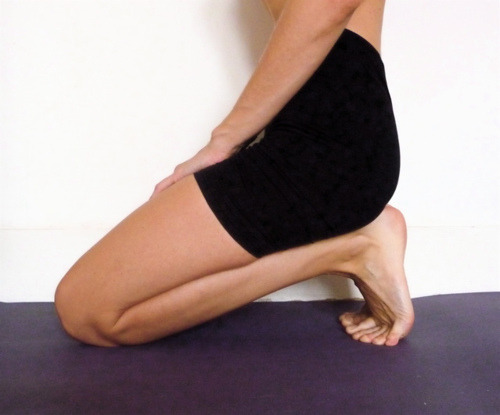 Vajrasana: curl the
toes under and sit back on the heels, keeping the spine upright, resting the
hands on the lap. Lean forward if the stretch along the soles of the feet.
Vajrasana: curl the
toes under and sit back on the heels, keeping the spine upright, resting the
hands on the lap. Lean forward if the stretch along the soles of the feet.
Uttanasana: a
very basic pose, spend some extra time in your forward fold, using the inhale
to stretch the spine out longer, each exhale to bend more deeply into the fold.
Keeping the lumbar spine from rounding is way more important than briging the
hands to the ground or the head to the knnes.
After enough sun salutations to get the blood pumping, work on
some basic standing postures:
Viravidrasana I (Warrior I):focus on
keeping the back heel grounded, and bend deeply into the front leg
Viravdrasana II (Warrior II): be sure
to keep the hips level, and the front thigh parallel to the ground
Trikonasana (Triangle Pose): keep
the front kneecap aimed middle of the front foot, and the thighs firm
Utkata Konasana (Goddess Pose): taking
the legs wide, turn the feet out as much as you can while maintaining a stable
base and bring the hands to prayer or straight out with elbows bent to the
forearms point to the sky. Squat back as deeply as you can while keeping the
knees behind or directly over the ankles.
Parivrtta Prasarita Paddotanasana: come into
a wide-legged forward bend with the feet facing parallel, place one hand
directly beneath the chest while twist to extend the other arm straight up
towards the ceiling. Remember to push the thighs back to keep the plane of the
legs perpendicular to the floor.
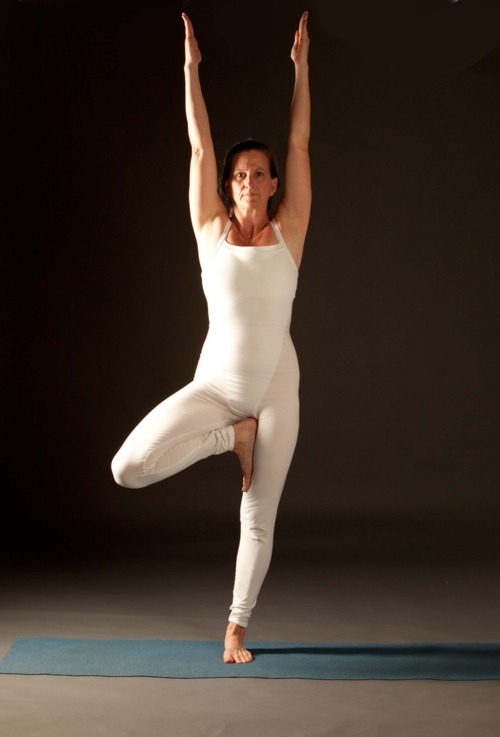
Vrkasana (Tree Pose):push the bent leg foot into the standing thigh, while pushing back with the standing inner thigh. Imaging roots growing from the standing foot into the floor beneath.
Janu Sirsasana: Bend the right leg in and place the heel underneath your pelvis so that you're, um, "directly stimulating that root chakra," so to speak, as you bend over the extended left leg, keeping the spine straight, your forehead descending towards the knee. Be sure to do both sides.
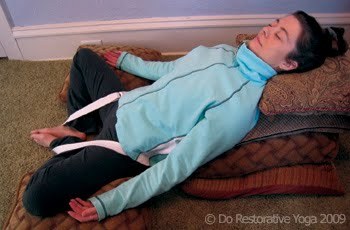
Supta Baddha Konasana (Reclining Bound Angle): As the photo suggests, I love doing this one with tons of props. You'll probably need every pillow and blanket in your house, but its worth it. Bring the soles of the feet together, knees bending out to the side, then recline back into a bolster or a pile of pillows and blankets. Supports your knees with more pillows or rolled blankets. You can bind the pose using a yoga strap (I use a old woven belt; even a scarf would work) and wrapping it behind the waist, around the ankles and behind the feet, as shown. It feels fantastic
Kurmasana (Tortoise pose): there's a
ton of very advanced variations for those that like impressing their friends, Ashtanga nerds, or people who were born with the bones of Gumby,
but I give the simplest one here since most of us don't have joints made of
synthesized rubber polymer. With the soles of the feet together, bend the knees
less than baddha konasana, andplace the feet further away, making the legs form
a longer diamond. Hinge forward, bringing your head to the feet. Grab the feet
with a bend in the elbows as shown, or you can thread your arms straight out
under the knees, palms down.
Of course, end in Svasasana. Imagine the feelings of joy and
energy awaken by the practice, while staying mindful of being grounded and
balanced. And remember to thank your grundle.

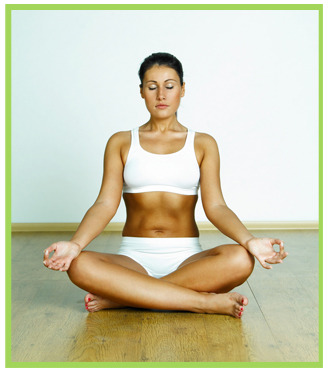
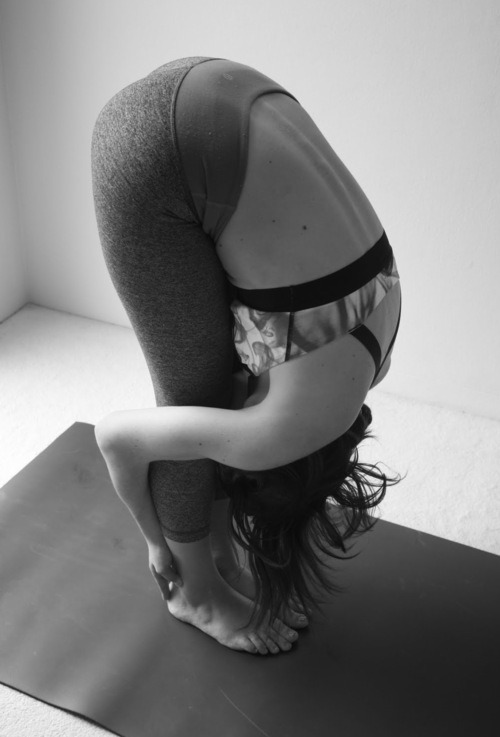
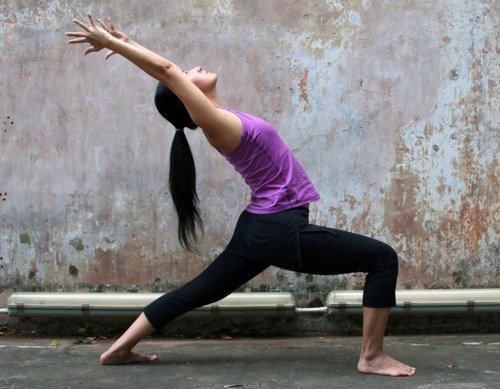

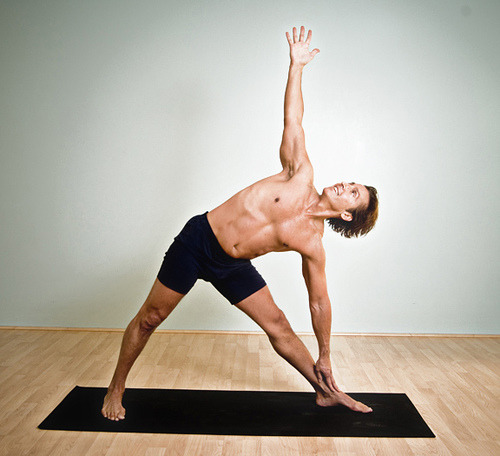
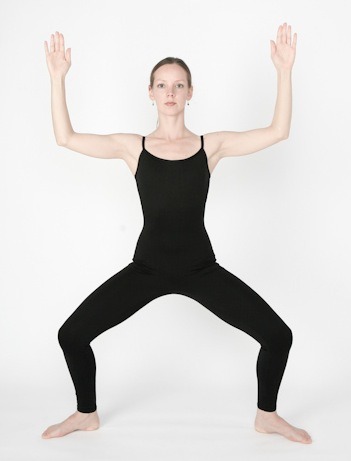
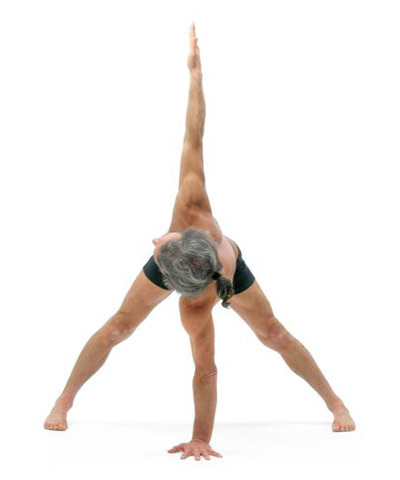
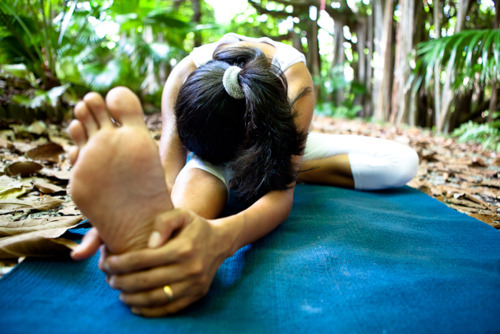

No comments:
Post a Comment